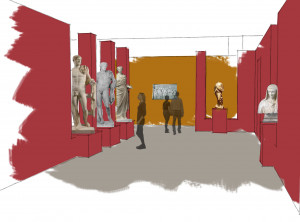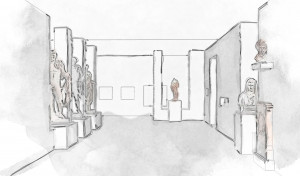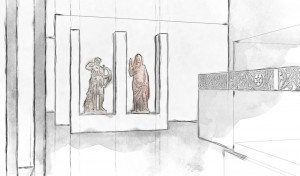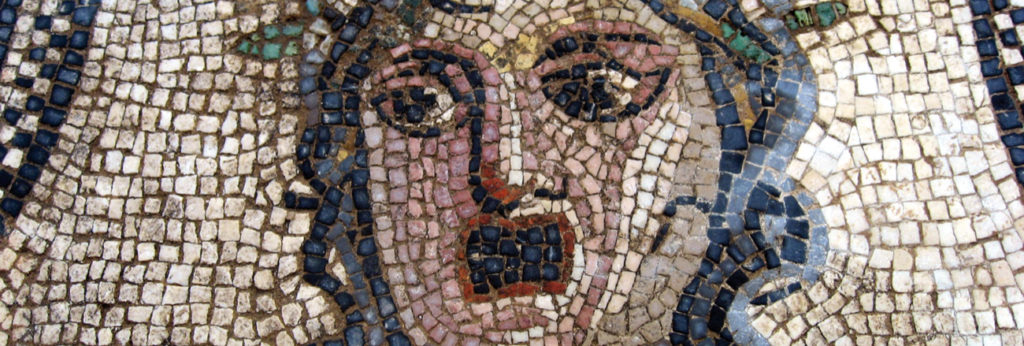Behind the scene
The scenery layout
Some beautiful frescoes from the House of Augustus on Palatine Hill inspired the scenery layout for the exhibition The Roman Emperor, a mortal among the gods.
From these images, a special layout was created, echoing the principles of building volumes and associating colours.
Without falling into the trap of simply recreating this ancient style, featuring typical characteristics of Roman times, the scenery layout is in fact designed in a suggestive way, with various symbolic settings. Simple and contemporary lines, minimalistic volumes, with no fancy detailing means that the focus is given to the scientific content and really highlights the artworks. Openings in the exhibition panels create the effect of Roman colonnades, and focus the visitor’s gaze on the exhibition tour, as well as on the visual association of shapes and colours.
This approach merely suggests the atmosphere of the prince’s palace, the divine emperor…
-

sketch of the scenography -

sketch of the scenography of an archaeological exhibition -

Sketch of the scenography of a temporary exhibition
© Saluces
Installing the artworks
When creating a temporary exhibition, the administrative management and logistics for moving the artworks are highly important. This is very complex work, often dealing with important artworks and loans from outside the museum. The exhibition The Roman Emperor, a mortal among the gods includes 148 artworks from 14 loaning institutions, 2 of them foreign and 2 French museums: the Louvre, with 30 artworks on loan, some of them major ones, and the Musée d’Archéologique National. The difficulty in installing artworks depends on the quantity and quality of the items on loan. It is obviously easier to organise the display of a ring compared to a marble bas-relief. Likewise, approximately a dozen different people will be working in an area of 600m² at the same time, ranging from the set designer to the person in charge of positioning a heavy altar onto a base. The main challenge to overcome during the installation is to make sure these teams work well together, and respect requirements in terms of preventive conservation and security.
